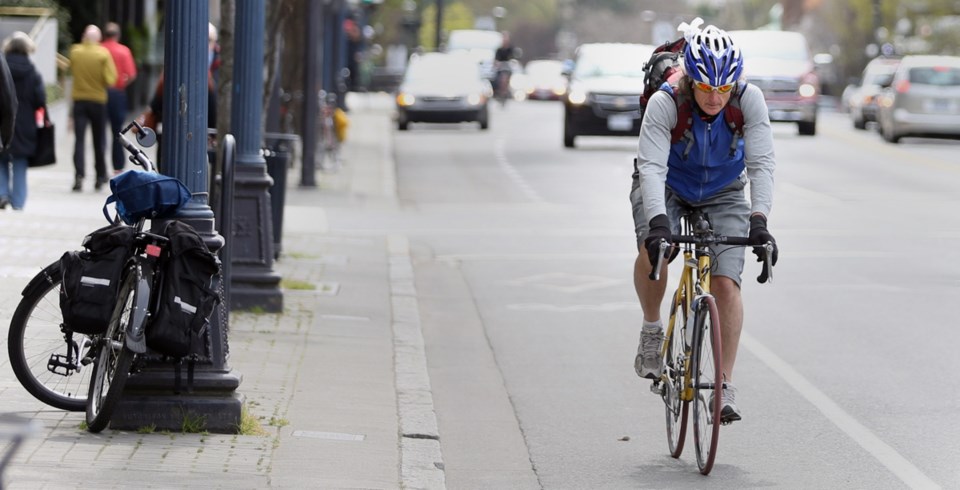Victoria is outstripping Western Canada’s largest cities when it comes to regulations encouraging green buildings, according to a new report on urban energy management.
The Canada West Foundation, a think thank, examined urban energy management in the seven largest cities in the West for its report, Buildings, Bicycles and ’Burbs, released Monday.
While all cities in the report made progress, Victoria and Vancouver lead the way, in part, because the provincial government has set a high standard, the report said.
“The B.C. government has created a comprehensive and extensive energy plan which targets energy efficiency and conservation.”
Mayor Dean Fortin said Victoria is taking a progressive approach.
“We have proved, on behalf of our citizens, that Victoria cannot only measure up to all of these big cities in Western Canada, but can also lead,” Fortin said Monday.
Most citizens accept and support energy savings efforts to create a more sustainable community and they “continue to ask us to do more,” he said. “It is just reflective of Victoria.”
Every year will see at least one, sometimes up to three, new buildings committed to leadership in energy and environmental design standards, he said.
The big challenge is how to encourage owners of the thousands of existing buildings to do more, he said.
The city has started to examine ways that energy efficiency programs for these buildings can be supported by private or public incentives, Fortin said. “It’s “early days, but we recognize that is the next big step.”
Other Victoria examples of energy and sustainability programs include partnering with the University of Victoria to learn how much solar energy lands on a rooftop, he said. That information will help a building owner decide whether it makes sense to install solar panels, he said.
A total of 20 stationary energy initiatives exist in Victoria, a higher number than in Vancouver, Calgary, Edmonton, Saskatoon, Regina and Winnipeg, the report said.
Stationary energy is the energy used by equipment in fixed locations, such as buildings, to provide heat, light and power.
City staff check rezoning and development applications to ensure they comply with a sustainability checklist, the report found.
“Municipal governments can lead the way in areas outside their direct operations by influencing the design of the built environment and the modes of transportation used by residents,” the report said.
Now that Monday’s report has established a benchmark, a followup report outlining recommendations is expected later this spring.
The current report looked at mobile energy, such as alternative fuels and different types of transportation, and at what municipalities are doing within their own operations.
Most of the cities examined are converting to or buying electric, compressed natural gas, or hybrid vehicles, the report said. Victoria has an idling-control bylaw for all drivers and is among municipalities taking action to reduce energy consumption within its own fleet.
Victoria, Edmonton and Regina carry out energy audits on their own buildings, the report said. Other initiatives in Victoria include a low-flow shower and tap replacement program for multi-unit residential buildings.
The city also has a revitalization tax exemption bylaw for green energy equipment to encourage renewable energy use in buildings, the report said.
Fortin noted that Victoria’s bicycle master plan is being updated.
“Victoria is very active on energy management and is noted for its cycling initiatives. It is considered to be the cycling capital of Canada and has achieved a high proportion of total city trips done by bicycle (11 per cent),” the report said.
Victoria has 41 kilometres of bike lanes, 2.6 km of multi-use trails for bikes and pedestrians, and two km of buffered bike lanes that give extra space between vehicles and bikes, and 18 km of signed bike routes, the city’s website states.
Barriers to bringing in new energy programs include the fact that traditional energy is relatively cheap and abundant, the report said.
New technologies can be difficult to implement in small markets. However, a municipality can help by taking part in demonstration or pilot projects, the report said. Cities are also limited by their ability to fund and legislate.



